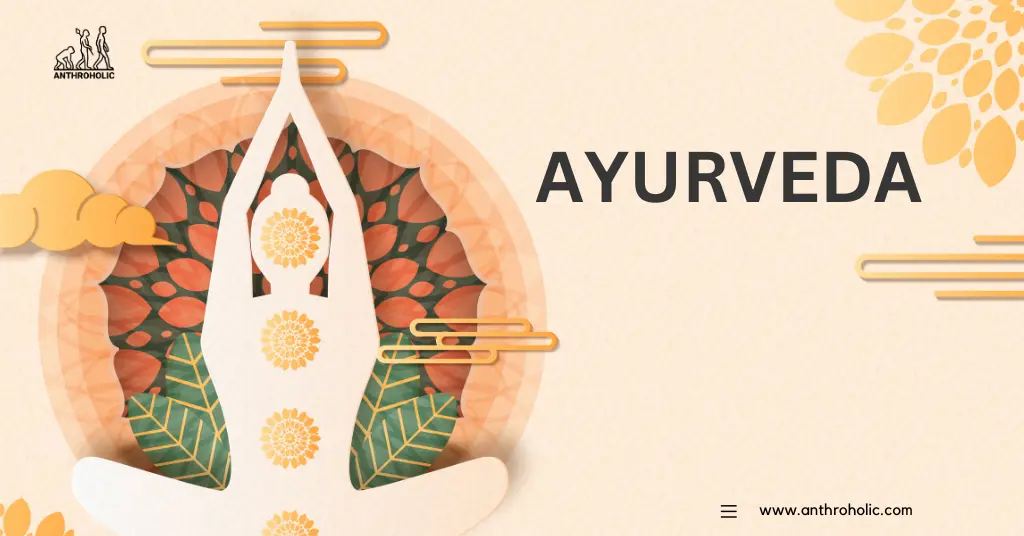AI Answer Evaluation Platform Live Now. Try Free Answer Evaluation Now
Ayurveda
Ayurveda, stemming from the Sanskrit words ‘Ayur’ meaning life and ‘Veda’ meaning science, is an ancient Indian medical system that encompasses more than physical health, extending to the mental and spiritual realms of well-being. With a history spanning over 5,000 years, Ayurveda’s holistic approach is based on maintaining balance in the body, using diet, herbs, yoga, and lifestyle adjustments.

Historical Background of Ayurveda
Origins
- Vedic Period: Ayurveda’s roots are traced back to the Vedic civilization around 1500 BCE [1].
- Classic Texts: The foundational texts of Ayurveda include “Charaka Samhita” and “Sushruta Samhita,” dating to the early centuries of the Common Era [2].
Development and Spread
- Medieval Period: Ayurveda flourished in medieval India and spread to neighboring regions like Sri Lanka and Nepal.
- Colonial Impact: During British rule, Ayurveda faced suppression but continued to be practiced in rural areas.
- Modern Revival: In the 20th century, Ayurveda saw a resurgence, especially through government initiatives and integration with Western medicine [3].
Key Principles
The Five Elements
Ayurveda asserts that everything in the universe is composed of five fundamental elements: Ether, Air, Fire, Water, and Earth.
The Three Doshas
- Vata (Air and Ether): Governs movement.
- Pitta (Fire and Water): Controls metabolism and transformation.
- Kapha (Water and Earth): Relates to structure and lubrication.
These doshas are biological energies found in the human body and mind, and imbalances can lead to health issues [4].
Prakriti and Vikriti
- Prakriti: The inherent constitution of an individual.
- Vikriti: The present state of health, indicating any imbalances from one’s Prakriti.
Table 1 shows the characteristics of each dosha.
| Dosha | Characteristics |
|---|---|
| Vata | Dry, light, cold, mobile, clear |
| Pitta | Hot, sharp, light, liquid, spreading |
| Kapha | Heavy, slow, oily, dense, soft |
Therapeutic Practices
Diet and Nutrition
Ayurveda emphasizes individualized diets based on one’s Prakriti, favoring specific tastes and food qualities to balance the doshas.
Herbal Medicine
Herbal remedies are used extensively, often combined into complex formulations to treat specific conditions.
Panchakarma
A detoxification therapy involving five procedures, including massage, herbal enemas, and nasal administrations.
Contemporary Relevance
Integration with Western Medicine
Ayurveda is increasingly recognized and integrated into Western medical practices as a complementary therapy.
Global Popularity
The global market for Ayurvedic products was valued at approximately $3.4 billion in 2015 and is expected to grow.
Conclusion
Ayurveda is not merely a system of medicine; it is a philosophy and a way of life. Its holistic approach, rooted in ancient wisdom, continues to be applicable in today’s world, addressing both physical ailments and psychological well-being. As a bridge between the past and the present, Ayurveda offers timeless insights and therapeutic benefits.
Sources
[1] Basham, A.L. (1959). “The Origins and Development of Classical Hinduism.” Oxford University Press.
[2] Sharma, P.V. (1981). “History of Medicine in India.” Indian National Science Academy.
[3] Zysk, K.G. (2000). “Asceticism and Healing in Ancient India.” Motilal Banarsidass.
[4] Lad, V. (2002). “Textbook of Ayurveda.” The Ayurvedic Press.




